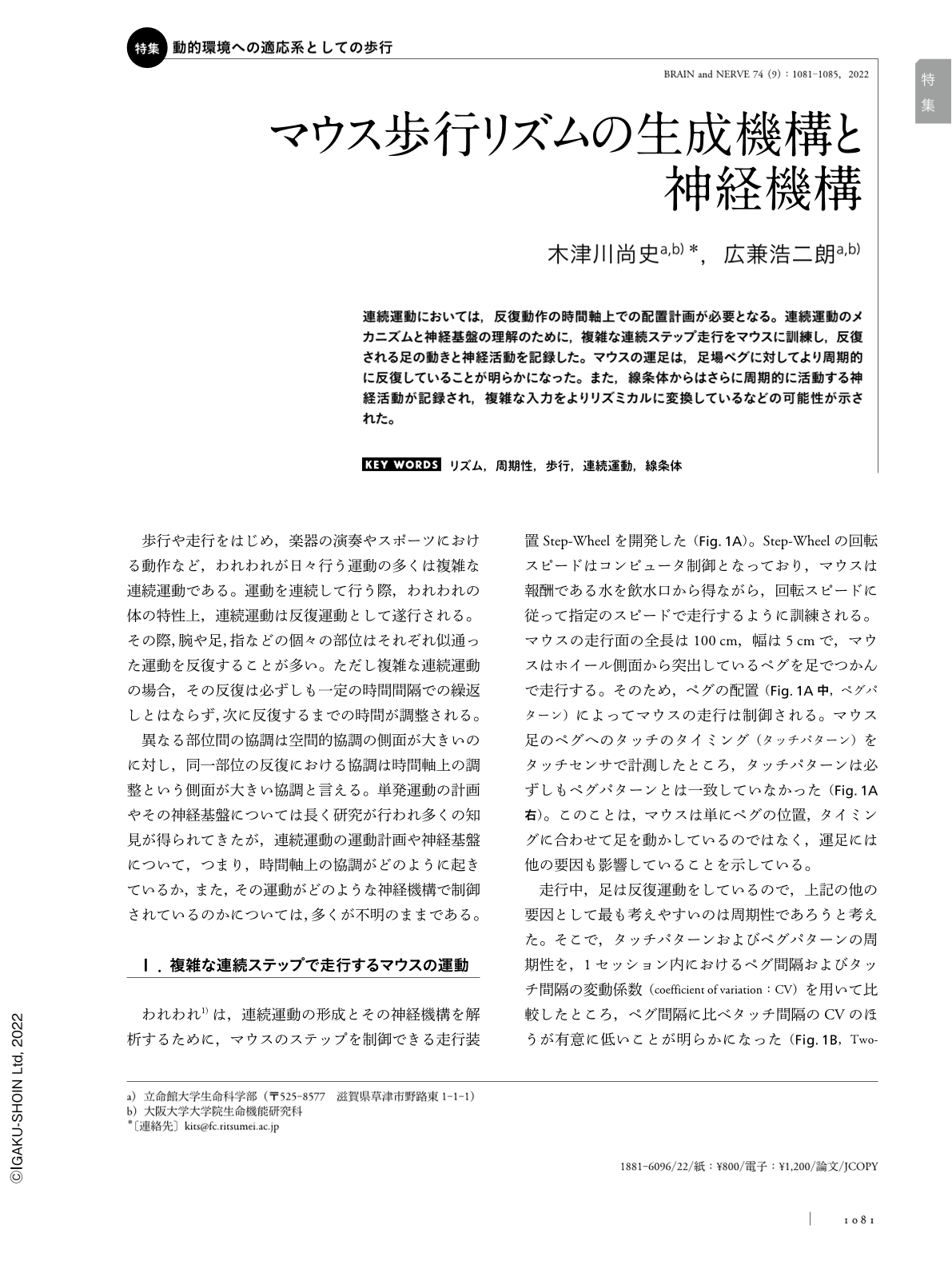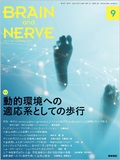Japanese
English
- 有料閲覧
- Abstract 文献概要
- 1ページ目 Look Inside
- 参考文献 Reference
連続運動においては,反復動作の時間軸上での配置計画が必要となる。連続運動のメカニズムと神経基盤の理解のために,複雑な連続ステップ走行をマウスに訓練し,反復される足の動きと神経活動を記録した。マウスの運足は,足場ペグに対してより周期的に反復していることが明らかになった。また,線条体からはさらに周期的に活動する神経活動が記録され,複雑な入力をよりリズミカルに変換しているなどの可能性が示された。
Abstract
The arrangement of a series of repetitive motions on the time axis should be planned while constructing continuous movement. To understand the mechanism for planning continuous movement and its neural basis, mice were trained to perform complicated continuous step running. The repeated foot movements and neural activities of the animals were recorded. The scaffolding peg arrangement was complex; however, the steps turned out to be more rhythmic, indicating that the mice adjusted to repeat their movements periodically rather than fitting their foot timing with the peg arrangement. In addition, neural activity recorded from the striatum was also found to be rhythmic, suggesting that the striatum may be involved in converting complex inputs into more rhythmic outputs.

Copyright © 2022, Igaku-Shoin Ltd. All rights reserved.


